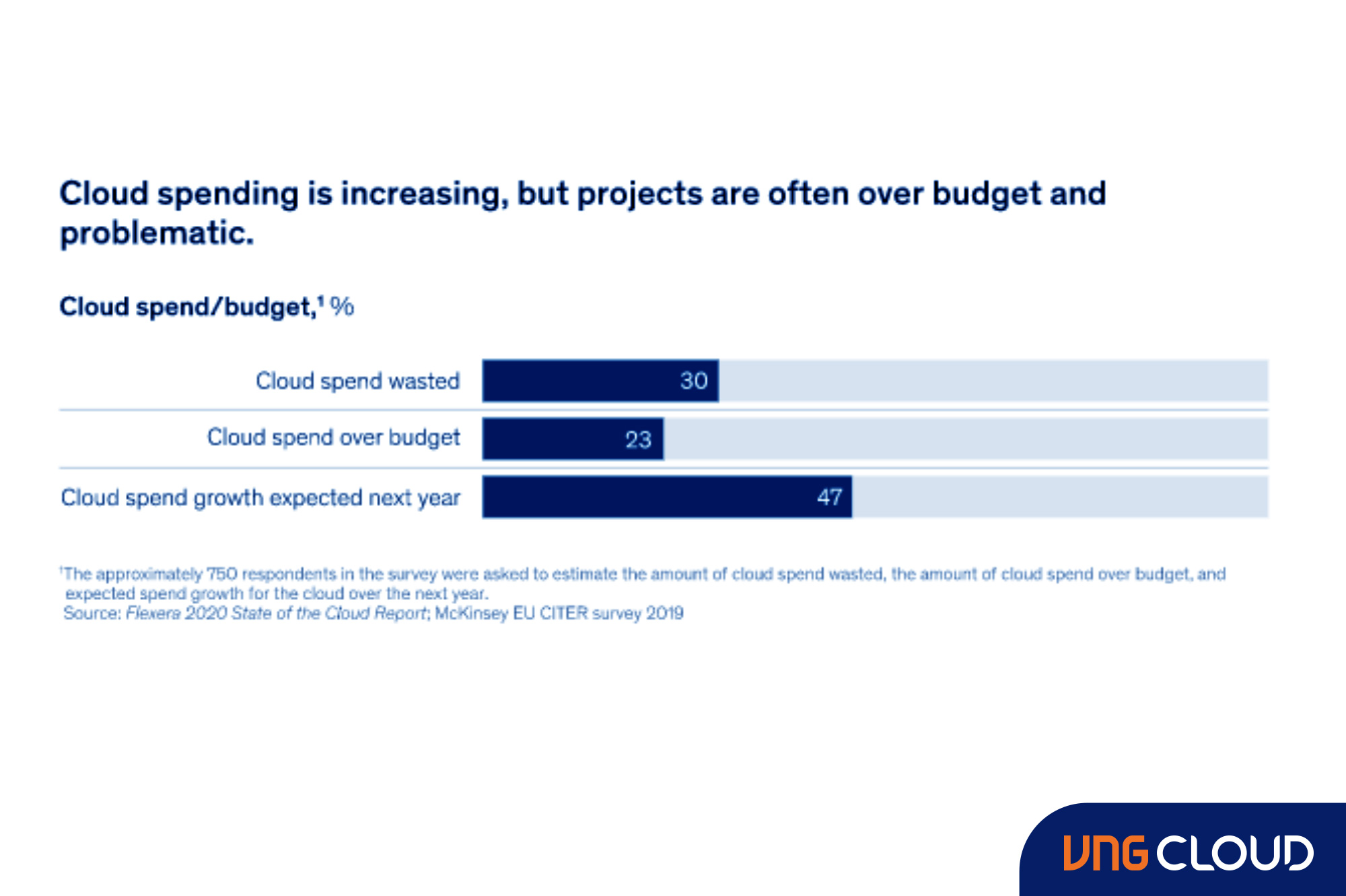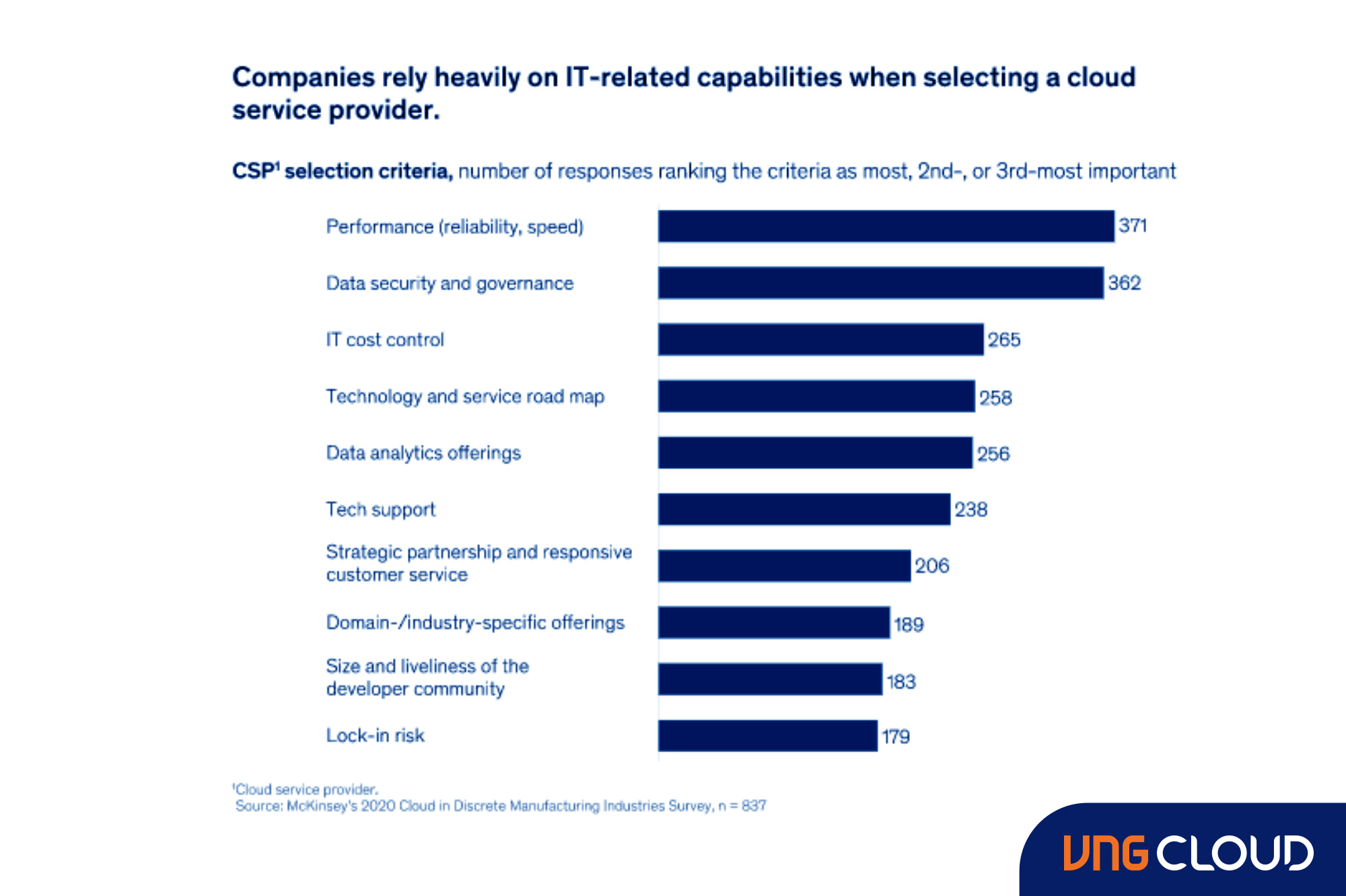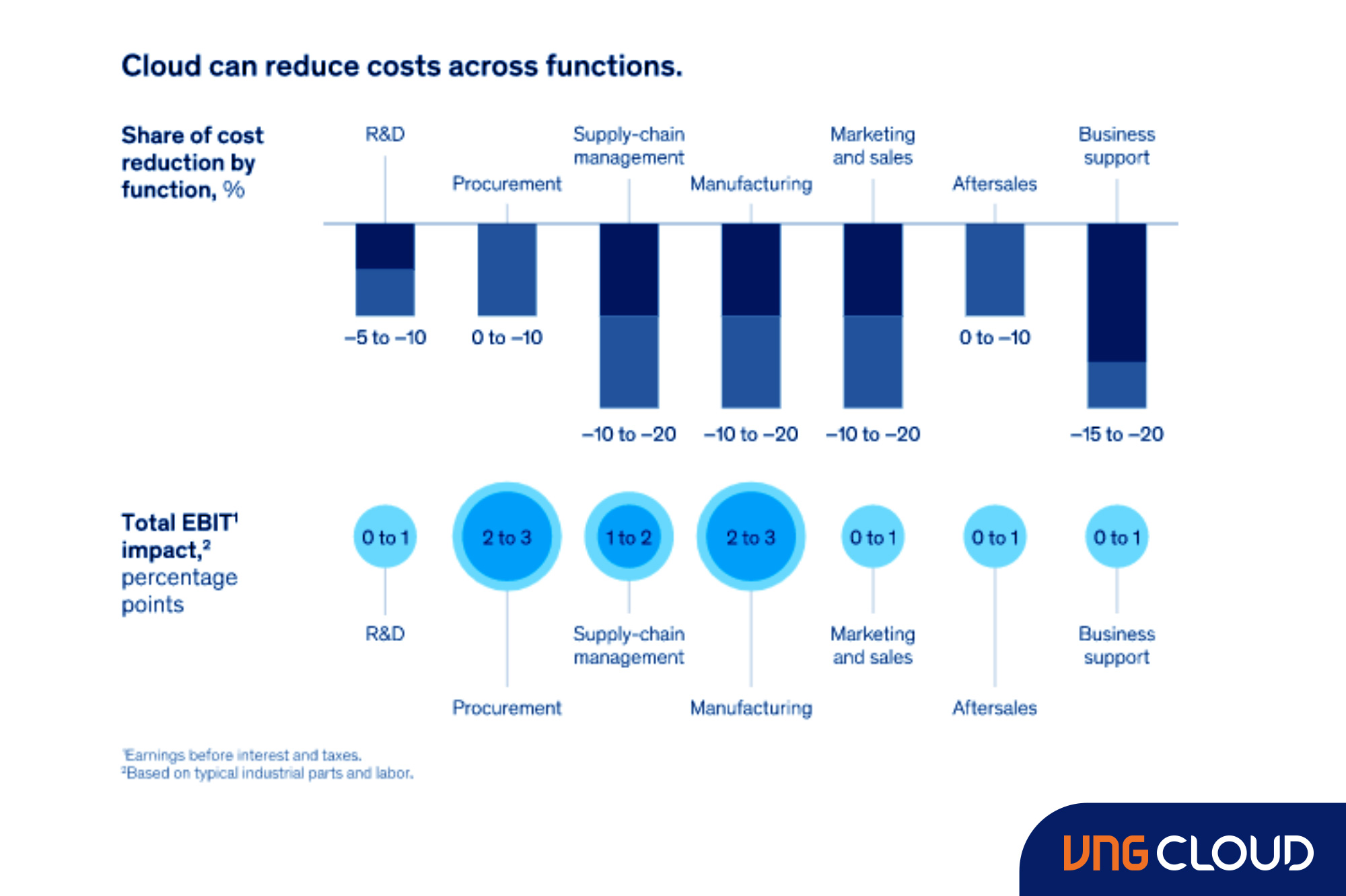During the peak of the COVID-19 pandemic, numerous industrial companies sought solace in cloud technology to enhance productivity, flexibility, and resilience. It was hailed as a panacea, capable of remedying various challenges such as declining sales and dwindling profits. However, for some industrial players who embarked on their cloud journeys earlier, a more realistic picture has emerged. Many cloud migrations in manufacturing have fallen short of initial expectations.
According to McKinsey & Company, while nearly every industrial company has embarked on a cloud initiative, most have yet to establish cloud-native capabilities or achieve significant business impact. According to a report by McKinsey, on average, industrial companies have exceeded their cloud spending budgets by 23% and estimate that 30% of their expenditures are wasted. This issue is set to escalate as companies project a 47% increase in cloud spending next year. To prevent this problem from snowballing, industrial companies must swiftly rebalance their cloud programs by shifting focus from infrastructure alone to encompass software engineering, data and analytics, and adjustments in business processes. Many organizations are already striving to reset their cloud initiatives in response to these challenges.

Industrial companies often encounter challenges stemming from complex systems. For instance, one company faced the daunting task of rationalizing over 30 enterprise-resource planning systems acquired through a series of mergers. This complexity hindered transparency and slowed down critical processes for functions such as strategy, finance, and pricing. Valuable data for improving the business was scattered across spreadsheets and dispersed hard drives, making it difficult to scale up any impactful initiatives without a multiyear program.
Another significant factor is the companies’ singular emphasis on IT cost optimization rather than recognizing the potential for broader business value. In this survey by McKinsey, approximately 59% companies in this industry anticipate the cloud to deliver greater value in the realm of IT rather than for overall business objectives. Moreover, when asked about specific use cases they were familiar with, around 40% immediately cited examples related to the IT function, likely influenced by the IT department's higher level of cloud maturity. Even in the selection of cloud service providers, companies primarily focused on technical performance and data security rather than considering the potential to enhance overall business value.

It is also worth noting that numerous industrial players opt to adopt and utilize cloud technology solely based on operational and technological considerations, rather than a deliberate focus on value-driven outcomes. Their priorities lie in enhancing operational efficiency (by upgrading IT and IT infrastructure to streamline internal processes), ensuring quality and reliability of services (to gain or sustain a competitive edge by offering superior products and services), and bolstering security and risk mitigation (by improving data security to counter the rising cybersecurity threats).
Many companies fail to recognize that the true value of the cloud extends far beyond IT. The cloud, digital channels, and data and analytics have the potential to enhance every aspect of industrial companies' operations, from day-to-day business management to product development, delivery, sales, and service. In other words, realizing the full potential of the cloud entails more than simply replacing infrastructure. It requires a holistic approach encompassing software engineering, process optimization, and business innovation. This is the essence of "bending the curve" towards a transformative journey that yields short-term profitability.

Take the example of Volkswagen, the largest automaker globally, which leverages a common cloud platform spanning 124 plants, 500 warehouses, and 1,500 suppliers. Through this platform, real-time data from Volkswagen's machines and systems are consolidated, while advanced analytics tools track logistics and provide insights into shop-floor processes. The company has invested in training over 200 specialists for its cloud innovation center. Volkswagen's industrial cloud is poised to play a pivotal role in achieving its goal of a 30% reduction in factory costs by 2025, and it also holds the potential to foster innovation within its vibrant partner community.
The cloud holds the potential to revolutionize various processes across different functions within industrial companies, including R&D, procurement, supply chain, manufacturing, marketing and sales, aftermarket, and business support. By harnessing the power of the cloud, companies can achieve increased efficiency that directly translates into improved margins and productivity.
In the realm of procurement, for example, the cloud plays a vital role in data management and integration, enabling companies to streamline their information and effortlessly identify opportunities. This includes identifying which suppliers to engage with for cost concessions in response to commodity fluctuations. Moreover, the cloud facilitates the swift and scalable assessment of new procurement tools, such as those focused on spend intelligence or electronic requests for information and quotes. These advancements in procurement practices have the potential to transform good organizations into exceptional ones, often resulting in a remarkable 60% improvement in procurement savings.

The cloud not only has a positive impact on margins but also serves as a catalyst for business growth. It opens up avenues for accessing cutting-edge innovations, including advanced artificial intelligence and machine learning engines, through partnerships with cloud providers. Additionally, the cloud empowers companies to experiment with new products and features at minimal cost, as setting up a "sandbox" environment becomes nearly effortless. It also fosters seamless integration with a partner ecosystem, enabling the adoption of new sales tools and services that facilitate collaboration and lower barriers to cooperation.
Finally, the cloud holds significant potential for achieving IT efficiencies, although it may not be the sole solution to reducing costs. Labor efficiencies materialize through cloud-standard instrumentation, which enhances software engineering practices and drives automation in areas such as application development and maintenance, development-security operations, infrastructure management, and support ticketing. Non-labor efficiencies arise from the consolidation of on-premises data centers, reduced hardware expenditures, and the streamlining of application portfolios through the retirement of legacy systems.